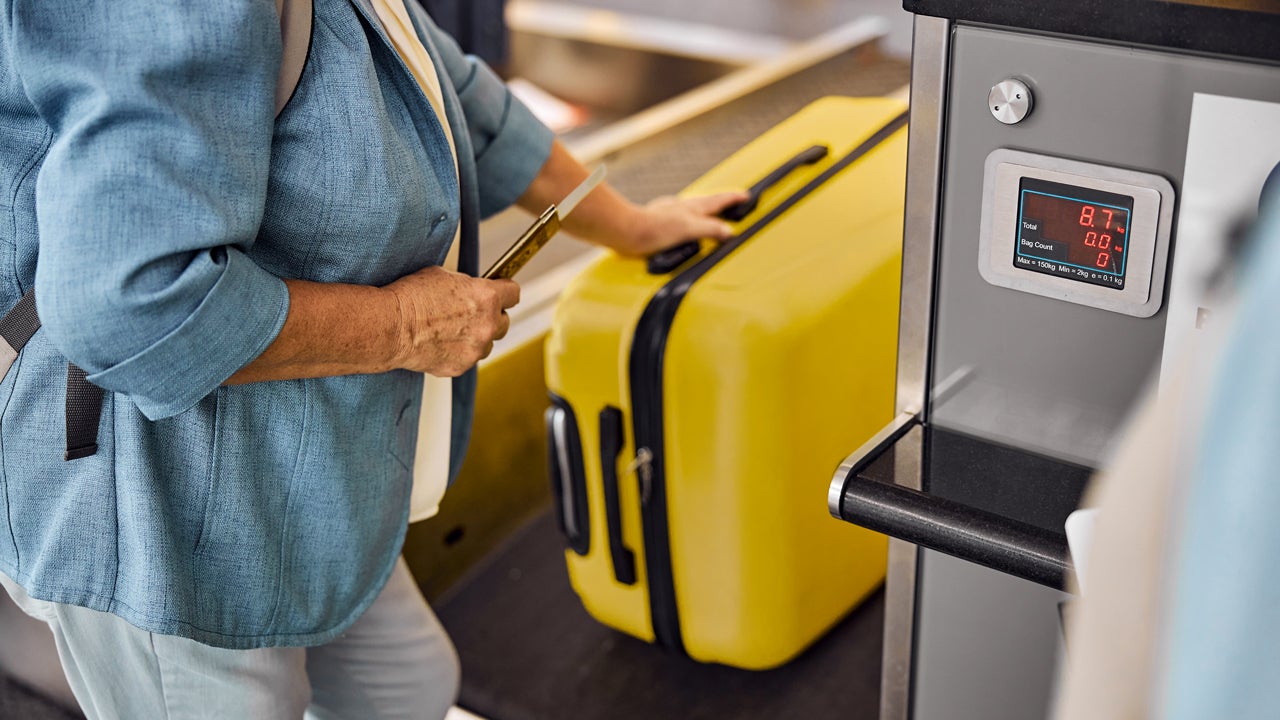Should you get an airline card?




Our writers and editors used an in-house natural language generation platform to assist with portions of this article, allowing them to focus on adding information that is uniquely helpful. The article was reviewed, fact-checked and edited by our editorial staff prior to publication.
Key takeaways
- Airline credit cards offer specific benefits tied to an airline's frequent flyer program, but they often have fewer reward categories for everyday spending.
- General travel credit cards offer greater flexibility for redemption across multiple airlines and travel-related expenses.
- The choice between an airline card and a general travel card largely depends on your loyalty to a specific airline and your travel habits.
Navigating the world of credit cards can be daunting, especially when it comes to specialty cards like airline credit cards. These cards can offer a range of enticing benefits, but are they the right fit for you? Let’s delve into the pros and cons of airline credit cards, compare them to general travel credit cards and provide insights to help you make an informed decision.
Co-branded airline cards vs. general travel cards
Airline credit cards tend to earn bonus rewards in fewer everyday spending categories than general travel cards,paying out in rewards linked specifically to their respective frequent flyer programs. Both are factors that make airline cards more restrictive than a general travel rewards card.
Still, unlike general travel cards, many airline cards offer attractive perks to reward your loyalty. From priority boarding to companion passes, airline credit cards usually include a lot of brand-specific benefits.
One of the most appealing features of an airline card, though, is for people chasing status with a particular airline; a co-branded card can help you get there more quickly. That’s because your purchases can help you meet status-qualifying requirements for a specific airline, which isn’t something you’ll find with general travel rewards cards.
In some cases, simply holding the card qualifies you for perks when you fly with the airline, such as flight upgrades, discounts on in-flight purchases and access to the airline’s airport lounges. These cards also frequently offer a free checked bag benefit that can save the cardholder $30 (or potentially more) for each one-way flight.
These brand-specific cards are most helpful if you’re loyal to an airline rather than a booking nomad who happily reserves with whatever airline is offering the best price or schedule to meet your needs.
General travel rewards cards, on the other hand, offer the benefit of flexibility even though you’ll usually sacrifice the brand-specific perks that come with co-branded airline cards. That said, some premium cards do offer brand-specific perks or status, so don’t give up on that idea entirely if you’re leaning toward a general travel card.
Additionally, some general travel rewards cards, such as those that earn Chase Ultimate Rewards or American Express Membership Rewards, for instance, allow you to transfer your flexible reward points to the loyalty programs of partner airlines, making it possible for you to pad the balance of given airline frequent flyer account if you so choose. Keep in mind, though, that transferred rewards likely won’t count toward your status points/miles totals.
Is an airline card worth getting?
Benefits of airline credit cards
The top benefit of airline rewards cards is the often impressive welcome bonuses they offer. If you’re looking for a quick way to rack up frequent flyer miles for a trip you already have your eye on, adding an airline card and meeting the requirements for its welcome bonus is a quick way to get there.
Once you’ve snagged that bonus, the cards can continue to be a boon for loyal customers. Frequent flyers can benefit from perks such as lounge access, priority boarding and free checked bags. If you travel frequently, but not quite frequently enough to earn status via the traditional path, an airline card can help you get there as you earn toward your loyalty requirements by using the card for regular, everyday spending.
Drawbacks of airline cards
The biggest drawback with airline cards is simply that your rewards are tied to a particular brand. True, many major airlines participate in large multi-airline networks, such as Oneworld or Star Alliance, meaning you could redeem rewards earned with one airline for flights with another airline in the same network. But it can be complicated to navigate those networks and rewards redemptions.
Also, airlines can devalue their programs without notice, potentially affecting your miles’ value. Imagine working to build up enough rewards for a specific flight only to have those hopes dashed when the airline changes the number of miles required. Unfortunately, it happens.
Be aware, too, that many airline rewards cards come with annual membership fees. Certainly, the annual fee can be worth it if you fully utilize the perks and benefits of the card, but you also have to take it into consideration.
When it makes sense to get an airline card
Getting an airline rewards card makes sense if you frequently fly with a particular airline, but perhaps not enough to have elite status with them. A strong airline card waves fees for checked baggage and offers priority boarding and lounge access — sometimes extending access to guests traveling with you. It’s also a good option if you’re planning a big trip and could benefit from a large influx of points.
Perhaps you’re a newlywed couple planning a honeymoon abroad. An airline card can allow you to earn a large number of points that can be used towards flight upgrades or even future travel.
Or let’s say you’re a small business owner who frequently travels for work. You might fly with the same airline to maintain consistency and convenience. An airline credit card could provide valuable perks like priority boarding, lounge access and free checked bags, making your business trips more comfortable and cost-effective.
Even if you don’t take many trips, an airline card could make sense for families who travel once or twice a year and need to check bags. Checked bag fees run about $30 for domestic flights and even more for international, depending on the airline — which means a family of four could end up spending $120 or more, offsetting the annual fee of a rewards card.
And if you’re able to earn status with an airline’s loyalty program, the benefits you earn are typically stronger than those you get from the card, while the card helps you maintain your status year to year. (Though don’t discount other ways to maximize your card rewards without loyalty to one brand.)
When it makes sense to get a general travel card
A general travel card is more suitable if you’re not loyal to one airline and prefer flexibility when redeeming rewards. For instance, if you frequently use different airlines or prefer to have options for hotels, rental cars and flights, a general travel card could offer more value.
Consider a family who loves to travel but isn’t tied down to a specific airline. They choose their flights based on the best deals and schedules that fit their needs. A general travel card allows them to earn rewards on a wider range of categories and use them for various types of travel, including hotels, rental cars, flights with various airlines, cruises and more. This gives them the freedom to choose the most economical options for their travels.
Another example of those who can benefit from a more general travel card is the young professional who often combines work with leisure travel. They might not be loyal to any particular airline but are keen on collecting rewards for their spending.
A general travel card can offer exceptional travel protections and the flexibility to use rewards for a variety of travel-related expenses. The broad earning and redemption options make it a more suitable choice for their versatile travel needs.
Tips for maximizing an airline credit card
The first step to maximizing any travel rewards — airline, hotel or otherwise — is making sure to register for the loyalty programs for the brands you frequent. From there, how much work you want to put into maximizing your rewards is really up to you, but the right credit cards can certainly help.
-
It may seem simple, but taking the step to open an airline rewards card means you’re committing to flying most frequently with that airline. Sure, there will be times the schedule or price is prohibitive, but the goal should be to use your chosen airline as often as possible. That’s how you’ll take full advantage of those loyalty benefits and justify the annual fee most airline cards require.
-
Holding multiple travel credit cards can offer several benefits. In fact, an airline card combined with a general travel card makes a powerful combo. Consider, for instance, that the Chase Sapphire Preferred® Card earns general travel rewards in the form of Ultimate Rewards points. It also offers stellar travel insurance and additional perks and features that make it a perennial favorite among travel rewards cardholders.
Those Ultimate Rewards points are transferable to a number of frequent flyer programs, including United MileagePlus. Therefore, holding a United card in addition to your Sapphire card means you get the perks that come with being a co-branded cardholder — like free bags, priority boarding and limited lounge access — but you can earn general rewards with your Sapphire card and transfer them to the United frequent flyer program when it fits your needs.
And with United a member of StarAlliance, you can maximize opportunities for flights with Air Canada, Lufthansa, SAS and 20 other airlines. Though remember: Status benefits and co-branded card perks are unlikely to apply with partner airlines.
-
It’s a good idea to re-evaluate your slate of credit cards regularly to ensure they are still meeting your budget and lifestyle needs. The advice is true with airline cards, too.
Airline frequent flyer programs change, airlines adjust their schedules and itineraries, your own preferences change. Keep an eye on your habits. If you find you aren’t flying that airline as frequently anymore, don’t be afraid to consider downgrading the card to a no-annual-fee version (if it’s available) or perhaps close the card altogether.
The bottom line
Choosing between an airline card and a general travel card depends primarily on your travel habits and loyalty to a specific airline. While airline cards offer specific perks tied to an airline’s frequent flyer program, general travel cards provide more flexibility in earning and redeeming rewards. Perhaps your best option is to combine the perks and powers of both.
The key is to understand your own travel needs and spending habits, then choose the best credit cards for your unique lifestyle and needs.





